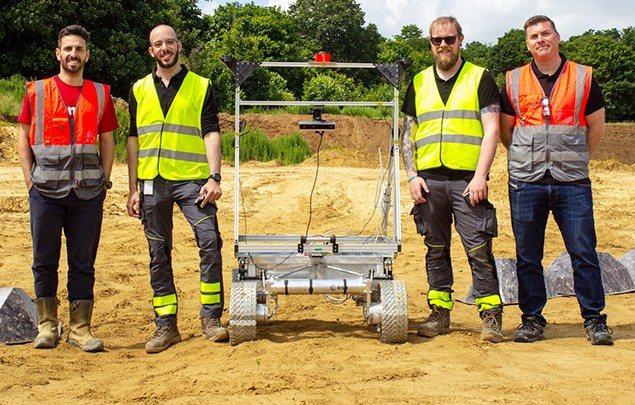Progress in the next generation of space exploration rovers

The Multi-Range Navigation for Fast Moon Rovers project, also known as FASTNAV, has worked on developing, maturing, and demonstrating a navigation solution for a new generation of lunar exploration rovers, with greater continuity of operation making it possible to reach farther distances and higher speeds, among other breakthroughs. GMV, through its UK subsidiary, is leading this development driven by the European Space Agency (ESA) under the General Technology Support Programme (GSTP). As part of FASTNAV, GMV has implemented a multi-range navigation solution compatible with the mobility requirements of the ESA’s lunar exploration scenarios (20 km in a lunar day), with the aim of increasing the average rover travel speed to 1 m/s on average, instead of the current 0.13 m/s.
This solution proposes a new paradigm of continuous driving and goes a step beyond current navigation and path-planning systems, as it will allow for travel speeds never before achieved in space exploration scenarios. This new paradigm will also bring about progress in the scientific performance and data collection productivity of such missions.
On 18 June last, GMV carried out preliminary tests at Upwood Quarry in Abingdon, UK (Oxfordshire County), owned by Hills Quarry Products Ltd, to assess the robustness of the system and the effectiveness and efficiency of the solution implemented in FASTNAV. This was done using the RAPID platform, the result of another previous GMV project with ESA. Over the day, GMV was able to verify that both RAPID (equipped with a groundbreaking locomotion system capable of covering long distances at “high” speed) and the multi-range FASTNAV development work correctly and with proper resolution in various complex scenarios and challenging conditions. The successful completion of these preliminary tests made it possible to move on to the next phase of testing in a lunar analog environment, which is currently underway.
These tests are taking place during the first two weeks of July in the Navarrese desert of Bardenas Reales, an environment considered one of Spain’s lunar-analogous sites. This is an intensive field campaign in which the RAPID rover will be put to the test to demonstrate the capabilities of GMV-developed technology in various terrains with different densities of obstacles. The FASTNAV system will have to identify these obstacles and select the most appropriate route and speed configuration to get around them, bringing together classic machine vision technology and state-of-the-art artificial intelligence to avoid them and navigate autonomously, reaching the aforementioned average speed of 1 m/s.
GMV presented the preliminary results of this project at the international iSpaRo conference held in Luxembourg from 24-27 June. This space robotics event brings together scientists and industry experts to explore breakthroughs in the field and both commercial and R&D opportunities. GMV presented the progress of both FASTNAV and RAPID (a precursor project), the results of testing for the European robotic system Moon Rover, and the conclusions from a study of the application of deep learning in the Mars Rover’s terrain classification capacity.
Europe, through ESA and the European Union, is leading projects in the field of space exploration and, more specifically, space robotics, which is seen as a key area not only for progress in the space sector, but also for applicability in other environments, including mining, nuclear power plants, and rescue operations.